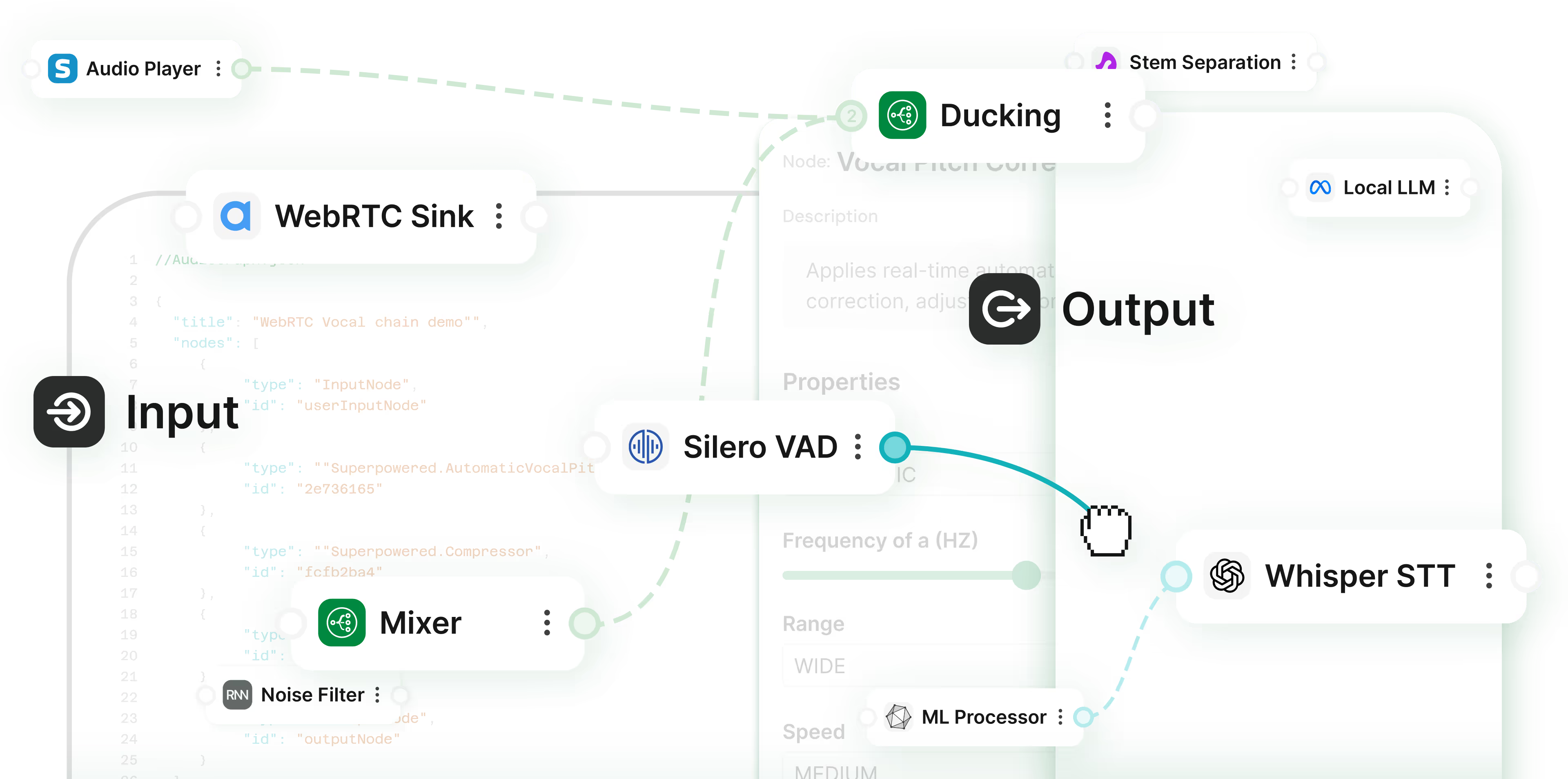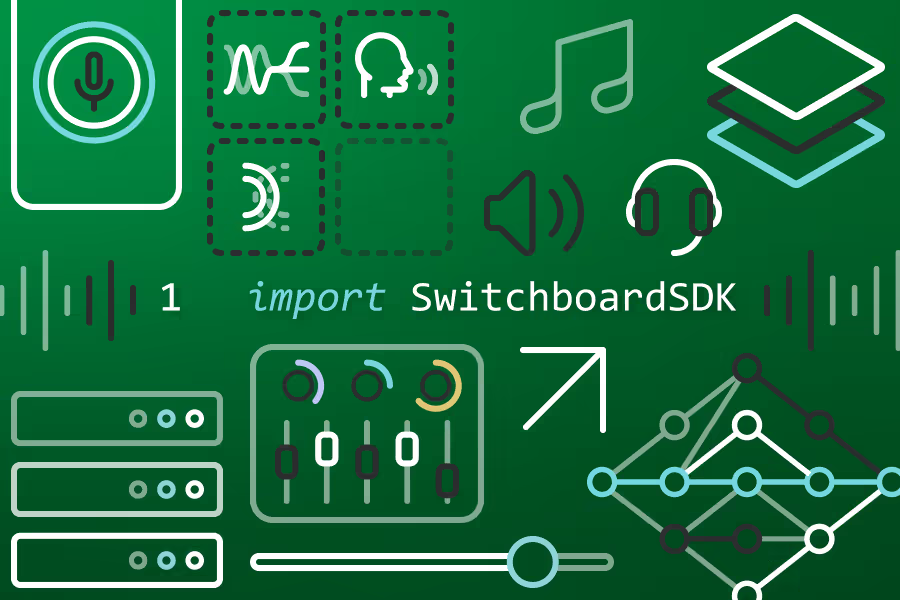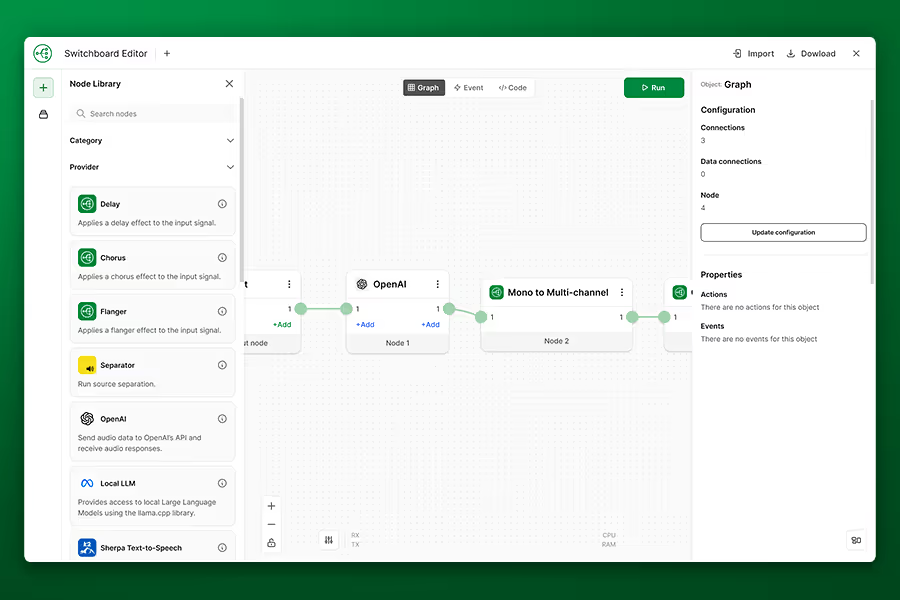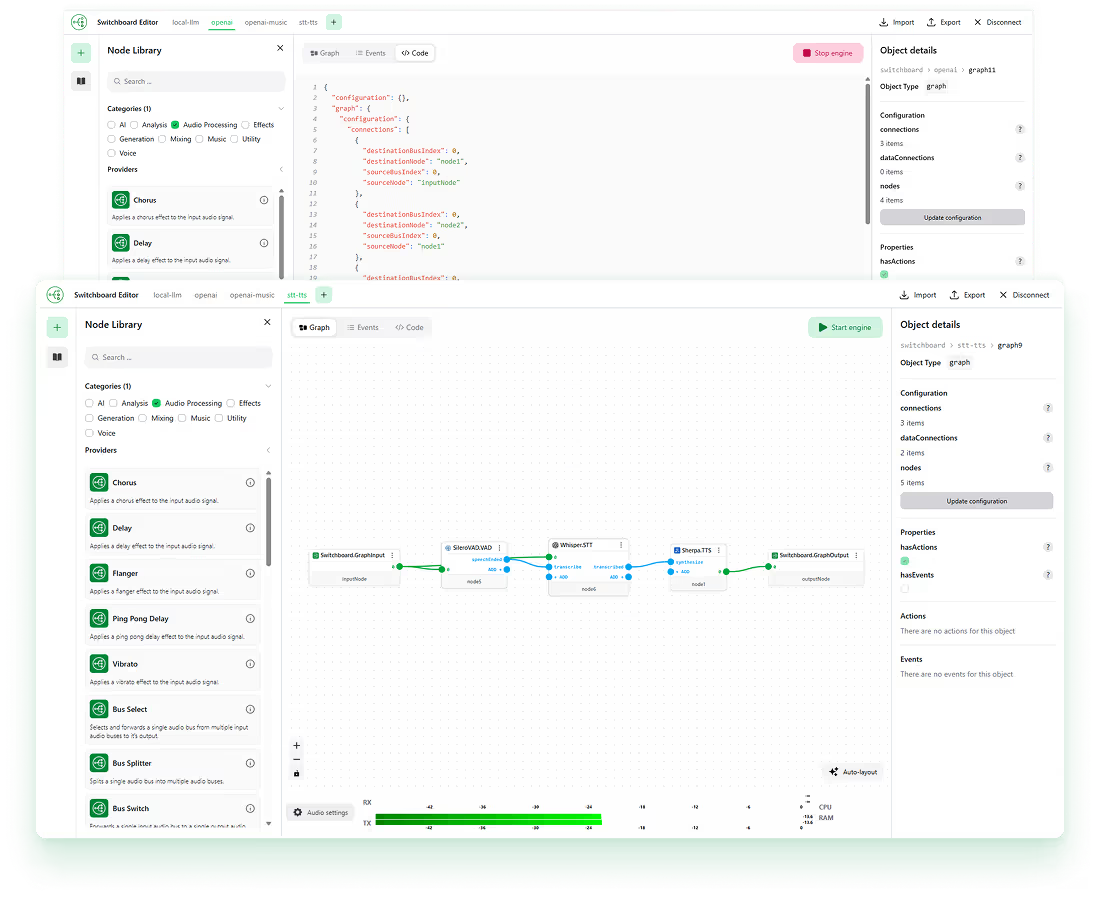
Build Voice AI and Audio Software Faster

WE WORK WITH

Switchboard SDK
For developers who need to deploy real-time audio engines without the headaches
Built on a C++ core with simple higher-level language and OS bindings, it delivers high performance and cross-platform capabilities. Open source example apps are easily remixed for many use cases involving voice, audio, AI, and real time interactivity.

Switchboard Editor (beta)
A no-code editor for new product and feature design, prototyping, and experimentation.
It allows you to connect all the latest voice and audio tools (both open source and proprietary) into unique combinations and instantly test them in the browser. These can subsequently be deployed on any platform using the Switchboard SDK.
Switchboard is a platform for builders
Switchboard serves a broad range of builders.
-
The SDK is primarily for software developers.
-
The Editor supports both engineers and non-engineers. It is typically used for designing and experimenting with new features or products, and its graphs can be deployed to any platform through the Switchboard SDK.
Note: The Editor is built on the SDK. Watching a few videos illustrating the Editor's capabilities can also help developers to understand how the SDK works.

The Editor and SDK form a unified platform: design visually, deploy with a production-ready engine.
Bring stakeholders together across development stages and speed up innovation cycles. Unify R&D, product, and engineering teams.
The SDK is open-access with a free tier. See Pricing.
The Editor is currently in limited preview. Here's why.
SDK | Editor* | |
|---|---|---|
Useful for software developers. | ✓ | ✓ |
Useful for non-software developers including product managers, innovation leaders, skunkworks teams, hobbyists. | – | ✓ |
Useful for R&D teams (bring your own nodes / algorithms / models to SDK, test them using the Editor). | ✓ | ✓ |
Functional, open source example applications for iOS, Android, Mac, Windows, Linux, Web (for reference implementations, or to remix / build on top of). | ✓ | – |
Drag-and-drop node based editor for quick prototyping and testing in-browser. | – | ✓ |
Pre-built audio graph templates that you can test in browser, then deploy to multiple platforms. | – | ✓ |
Integration support available. | ✓ | ✓ |
Cost. | See Pricing |
*Switchboard Editor is currently in closed beta.









